JUMP TO
Mulberry Jam Recipe Basics (The Journey Begins)
Mulberry jam recipe starts here. This simple yet rich fruit spread is easy to make at home and full of flavor. Whether you’re a seasoned cook or just starting out, this mulberry jam recipe gives you all the steps you need. Using just a few ingredients, it brings out the sweet and tangy notes of mulberries. This guide walks you through the process and makes the topic clear from the beginning. You’ll discover why this fruit is special, how to choose the best berries, and how to cook and store your jam safely.
Use your homemade mulberry jam recipe in breakfast dishes, toast toppings, or even in desserts like our gooey date brownie balls, where the fruity filling adds moisture and depth. This mulberry jam recipe is quick, full of natural flavor, and something the whole family can enjoy.
What is mulberry jam and why it’s worth making
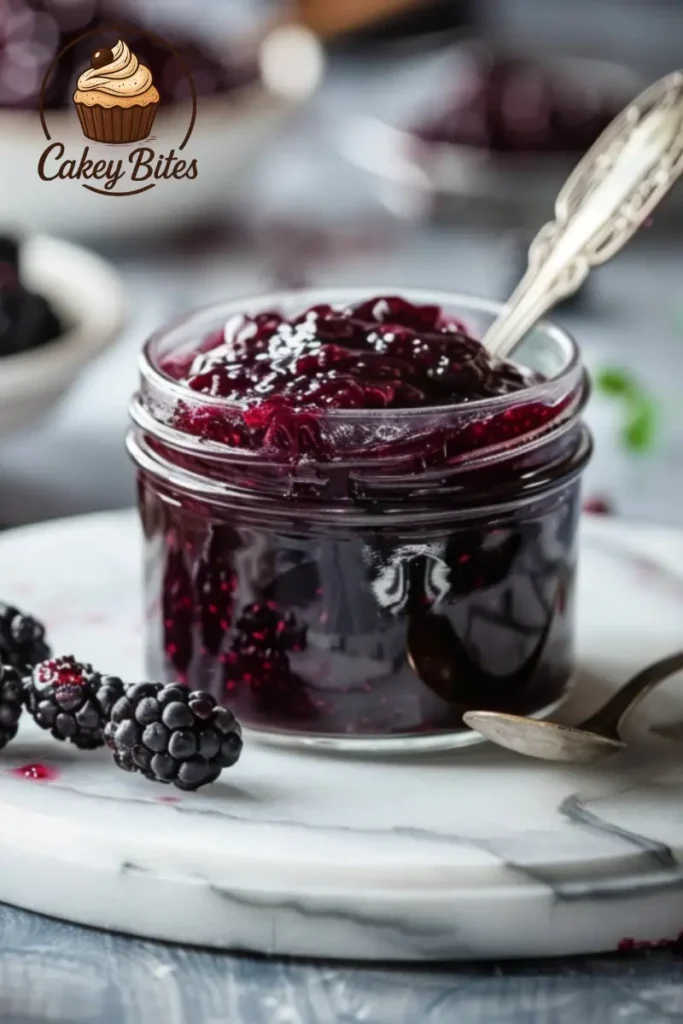
Mulberries are packed with antioxidants, fiber, and vitamins like C and K. They support immunity, improve digestion, and promote skin health. Their mild sweetness and deep purple color make them perfect for jam.
Unlike more common jams like strawberry or raspberry, a mulberry jam recipe has a rich, earthy tone. It’s less tangy and has a smoother, almost honeyed flavor. When cooked, mulberries release their juice quickly, helping the jam set naturally without needing added pectin.
That’s one reason many people prefer this mulberry jam recipe over others. It offers a more natural, less acidic taste. Whether used as a spread or folded into yogurt, it delivers something both classic and unexpected.
Choosing the right mulberries for your jam
Fresh mulberries make a bold difference in flavor. Their color is more vibrant, and the jam tastes brighter. Frozen berries, however, work well if fresh ones are out of season. Just make sure to thaw them and drain excess liquid before using them in your mulberry jam recipe.
You can find both wild and farm-grown mulberries. Wild berries often have stronger flavor and a deeper color, which makes the jam more robust. Farm-grown berries are easier to clean and more consistent. Either can be used in your mulberry jam recipe, but wild berries give it an edge in taste.
When choosing mulberries, go for ones that are plump, dark purple, and slightly soft to the touch. If the berries are too firm or red, they might be underripe. Ripe mulberries yield the best results in your mulberry jam recipe because they contain more juice and sugar.
Must-have tools and ingredients for the perfect mulberry jam recipe
To make this mulberry jam recipe, you don’t need fancy tools. Basic kitchen items are enough.
| Tool / Ingredient | Purpose in the mulberry jam recipe |
|---|---|
| Medium saucepan | Evenly cooks the berries and prevents sticking |
| Wooden spoon | Stirring without damaging the fruit |
| Clean jars with lids | For storing your jam safely and neatly |
| Sugar or honey | Adds sweetness and helps the jam set |
| Lemon juice | Adds brightness and supports the setting process |
Sugar helps draw out moisture and acts as a preservative. If you want a healthier version of this mulberry jam recipe, replace some sugar with honey. Avoid low-calorie sweeteners for this, as they don’t support the jam’s texture as well.
Lemon juice is essential. It balances the sweetness and ensures the jam sets properly. It also prevents the jam from turning brown over time.
Preparing your mulberries the right way
First, rinse the berries gently under cold water. Remove any stems, leaves, or debris. Let them drain completely before use. This simple cleaning step protects the flavor and quality of your mulberry jam recipe.
To keep the rich purple color, cook the berries on medium heat and stir occasionally. Avoid high heat—it can damage both the taste and the appearance of the jam.
You can mash the berries by hand for a chunky texture or blend them for a smooth finish. Both options are great. Just choose the one that suits how you like to spread your mulberry jam recipe on toast or swirl it into yogurt.
The core mulberry jam recipe (step-by-step)
You only need three key ingredients for this mulberry jam recipe:
- 4 cups ripe mulberries
- 2 cups white sugar (or 1.5 cups sugar + 0.5 cup honey)
- 2 tablespoons lemon juice
Place all ingredients in a medium saucepan over medium heat. Stir until the sugar dissolves completely. Then bring to a soft boil, stirring occasionally. The berries will start breaking down, releasing juice. Let it simmer for 15 to 20 minutes.
To check if the jam is ready, spoon a small amount onto a cold plate. After 30 seconds, run your finger through it. If it wrinkles slightly, it’s done.
Pour the hot jam into clean, sterilized jars, leaving a small gap at the top. Seal the lids tightly. Let them cool to room temperature before storing. You can keep jars of this mulberry jam recipe in the fridge for 3 to 4 weeks, or freeze them for longer storage.
Using your jam in creative ways
One great way to use your mulberry jam recipe is by adding it to baked treats. You can layer it into your own banana bread brownies for extra moisture and a fruity twist. It’s also perfect for breakfast pancakes, or as a surprise center in cupcakes.
For proven food preservation practices when canning at home—including sterilizing jars, making altitude-based adjustments, and ensuring safe storage—visit the National Center for Home Food Preservation’s “Ensuring Safe Canned Foods” page.
Print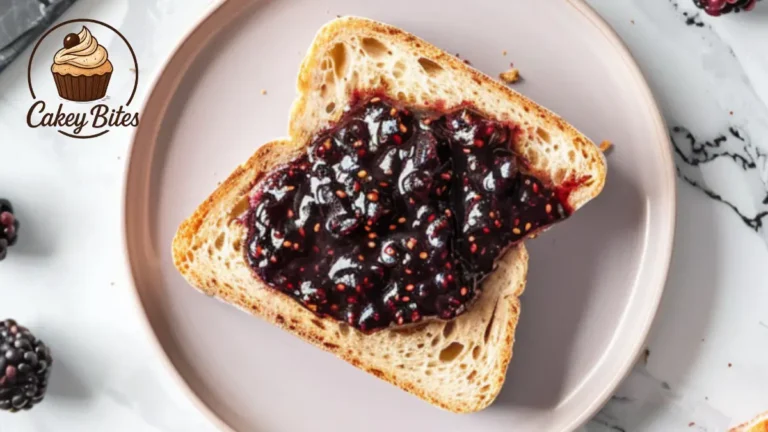
Easy Mulberry Jam Recipe
This easy mulberry jam recipe brings out the sweet, tangy flavor of ripe mulberries in a smooth, homemade spread. Perfect for toast, pancakes, and desserts.
- Total Time: 30 minutes
- Yield: 3–4 small jars 1x
Ingredients
4 cups ripe mulberries (fresh or frozen, thawed)
2 cups white sugar (or 1.5 cups sugar + 0.5 cup honey)
2 tablespoons lemon juice
Instructions
Wash and drain mulberries, removing stems and debris.
Place mulberries, sugar, and lemon juice in a medium saucepan.
Cook over medium heat, stirring until sugar dissolves.
Bring to a gentle boil and simmer for 15–20 minutes, stirring occasionally.
Test readiness with the plate method: drop jam on a cold plate, run your finger through—if it wrinkles, it’s done.
Pour hot jam into sterilized jars, leaving 1/4 inch space at the top.
Seal jars and let cool before refrigerating.
Notes
Use wild mulberries for a richer, deeper flavor.
For smoother jam, blend or strain before jarring.
Sugar-free version: replace sugar with erythritol or monk fruit.
- Prep Time: 10 minutes
- Cook Time: 20 minutes
- Category: Jam & Preserves
- Method: Stovetop
- Cuisine: Homemade
- Diet: Vegetarian
Nutrition
- Serving Size: 1 tablespoon (20 g)
- Calories: 45
- Sugar: 10 g
- Sodium: 0 mg
- Fat: 0 g
- Saturated Fat: 0 g
- Unsaturated Fat: 0 g
- Trans Fat: 0 g
- Carbohydrates: 11 g
- Fiber: 1 g
- Protein: 0.2 g
- Cholesterol: 0 mg
Keywords: mulberry jam recipe, easy mulberry jam, homemade jam, fruit preserves
Variations of mulberry jam recipe (Make It Yours)
Mulberry jam recipe is more than a basic kitchen task. It’s a way to create something personal and full of flavor. Whether you want it sweet, tart, thick, or infused with herbs, you can adjust it to match your own taste.
You don’t need advanced tools or special ingredients. Just a pot, fresh mulberries, and a bit of time. Plus, the possibilities to modify your mulberry jam recipe are endless.
For example, the Sugar-Free Lemon Cake makes a perfect match if you’re working on a no-sugar version. Pairing both brings out fresh, light notes in your desserts.
Mulberry jam recipe without pectin (natural setting techniques)
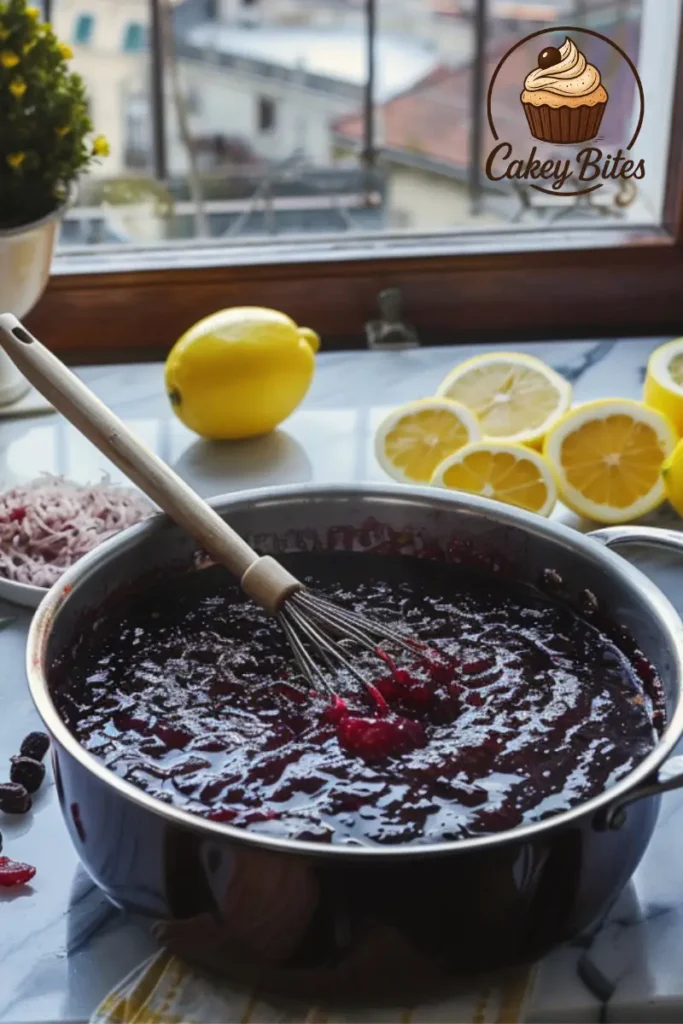
Cooking tips for natural thickeners
Skip commercial pectin and choose nature’s own. Lemon peel, green apple, or even chia seeds help your mulberry jam recipe set. Simmer with patience and stir often.
Add grated apple (with peel) while cooking. Apples are rich in pectin. Or use lemon juice—not just for taste but to adjust acidity and structure.
How long to simmer for best texture
Let your jam simmer slowly for 45 to 60 minutes. This slow cook gives a soft, thick texture. Keep the heat low and stir to avoid burning. The longer it cooks, the thicker and richer the result.
Using lemon or apple instead
Lemon juice adds brightness and improves natural pectin levels. Use one medium lemon per 500 g mulberries. Apple works the same way—half a grated tart apple does wonders for consistency.
Sugar-free mulberry jam recipe for guilt-free pleasure
Best sugar substitutes
A good sugar-free mulberry jam recipe needs the right sweetener. Use erythritol or monk fruit for gentle sweetness. Allulose keeps the texture smooth. Avoid overly strong options like pure stevia alone—it can overpower delicate flavors.
Try blending two sweeteners. For example, erythritol and a few drops of stevia give balance.
How to balance tartness
Mulberries change flavor as they ripen. Under-ripe berries are more sour. Always taste your fruit first. Adjust your sweetener little by little. Add a pinch of salt or half a vanilla pod to smooth sharp edges.
Ideal storage for low-sugar jams
Because sugar helps preserve, sugar-free jam must be stored carefully. Keep your mulberry jam recipe in clean, sealed jars in the fridge. Use within 2–4 weeks. For longer storage, freeze in small batches. Label dates to stay organized.
Adding flavor: spices, herbs, and surprises
Cinnamon, vanilla, cardamom
Spices add depth. One cinnamon stick during cooking warms up the mulberry jam recipe. Stir in vanilla extract at the end to soften the tart notes. Ground cardamom brings a floral, exotic feel.
Start light—1/4 teaspoon is enough for a small batch.
Herbal pairings: basil, mint, rosemary
Fresh herbs give your jam a modern twist. Add chopped mint or basil right before pouring into jars. Rosemary pairs well with deep, ripe mulberries. A little goes a long way—use just a pinch.
Unusual but delicious mix-ins (e.g. ginger, orange zest)
Looking for something new? Grate a bit of ginger. It adds heat and freshness. Orange zest lifts the flavor. Even a spoon of balsamic vinegar can surprise. These ingredients bring character to your mulberry jam recipe.
Chunky, smooth, or jelly-like? Find your texture
Pros and cons of each version
- Chunky: feels rustic, full-bodied.
- Smooth: spreads easily, especially for toast.
- Jelly-like: seedless and clean. Great for elegant serving.
Choose based on how you’ll use it. For baking, smooth works best. For cheese boards, go chunky.
Kid-friendly ideas
Kids often prefer smooth spreads. Try blending your mulberry jam recipe before bottling. Add natural vanilla or even a spoon of applesauce to make it more appealing.
Using a sieve vs immersion blender
To remove seeds, press the cooked fruit through a fine sieve. For creamy texture, use an immersion blender directly in the pot. Each method changes the feel of your final jam.
Tips from grandmas: heritage secrets for mulberry jam recipe
Passed down tricks for richer taste
In many kitchens, grandmothers passed down unique tricks. Some added a clean chicken bone (rich in natural gelatin). Others left the jam to cool slowly overnight, uncovered, for a firmer set.
These methods make your mulberry jam recipe feel nostalgic and full of soul.
Slow cooking vs fast boil
Slow cooking brings out richer flavor. It also protects the fruity notes. Fast boiling saves time but risks burning and loss of depth. Use a wide pan for even heat and better control.
The nostalgic part of preserving fruits
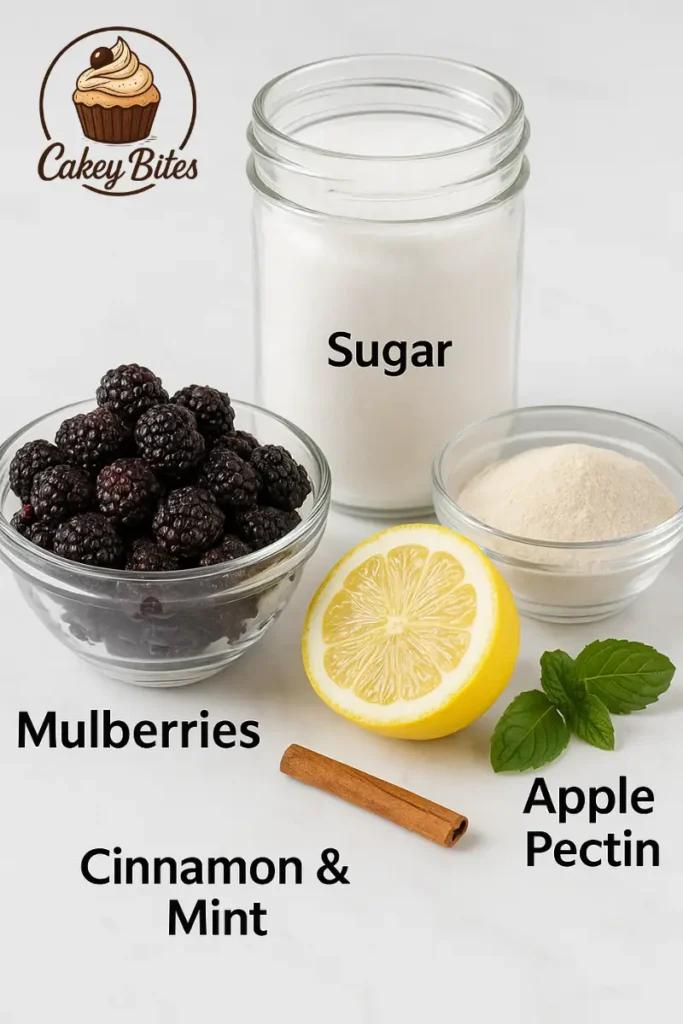
Making jam is more than just cooking. It connects you to the past. Picking fruit with your family. Stirring the pot while chatting. It’s a ritual. The smell of bubbling jam fills your kitchen with memory.
Visual guide to personalize your mulberry jam recipe
| Variation Style | Key Feature | Great With… |
|---|---|---|
| No pectin | Natural thickeners like lemon or apple | Clean-label diets |
| Sugar-free | Uses erythritol, stevia, or allulose | Diabetic-friendly, light sweets |
| Spiced & herbal | Cinnamon, vanilla, mint, rosemary | Toast, yogurt, crackers |
| Unique mix-ins | Ginger, orange zest, balsamic vinegar | Fancy cheese plates |
| Textured | Chunky, smooth, or jelly-like styles | Different meal pairings |
Easy mulberry jam recipe breakfast ideas
Mulberry jam recipe is more than a spread for toast. It brings color and flavor to every morning.
Toast with mulberry jam recipe
Start simple. Warm toast with mulberry jam recipe is quick and satisfying. Kids and adults love it.
Swirl into yogurt or oatmeal
Add mulberry jam recipe to plain yogurt. It sweetens naturally. Stir it into hot oatmeal too—it melts and adds fruity notes.
Add to smoothies
A spoon of mulberry jam recipe in your smoothie boosts flavor. It blends well with banana or berries.
Pour on pancakes or waffles
Warm mulberry jam recipe makes an easy topping for waffles. Add a scoop of ice cream for a rich treat. Try this brownie batter ice cream for an amazing combo.
Desserts with mulberry jam recipe
Mulberry jam recipe brings bold flavor to sweets. It works in many classic and modern treats.
Layered in cakes
Use mulberry jam recipe between cake layers. It keeps them moist and adds a sweet surprise.
In jam tarts or bars
Mini tarts filled with mulberry jam recipe are crowd‑pleasers. Crumble bars with jam are easy to make and store well.
Glaze your desserts
Heat mulberry jam recipe slightly. Brush it over tarts or cheesecakes. It gives a shiny finish and fruity taste.
Mulberry jam recipe in savory meals
Don’t keep mulberry jam recipe just for sweets. It adds balance to salty or creamy dishes.
Cheese boards
Place a small bowl of mulberry jam recipe next to cheese. It pairs well with brie or goat cheese.
Glaze for meats
Mix mulberry jam recipe with soy sauce or balsamic vinegar. Brush it over roasted meat or tofu.
Add to salad dressings
Whisk mulberry jam recipe into oil and vinegar. It makes a sweet-tart salad dressing. Works well with greens and nuts.
Gifts and storage for mulberry jam recipe
Mulberry jam recipe is a beautiful gift. It also keeps well if stored correctly.
Decorate your jars
Tie a ribbon around the lid. Add a handwritten label. Your mulberry jam recipe looks homemade and heartfelt.
Label with shelf life
Mark the jar with the date. A sealed mulberry jam recipe jar lasts months if stored in a cool place.
Gift boxes with jam
Add mulberry jam recipe to a box with crackers or homemade cookies. It’s a thoughtful and tasty gift.
How to preserve mulberry jam recipe
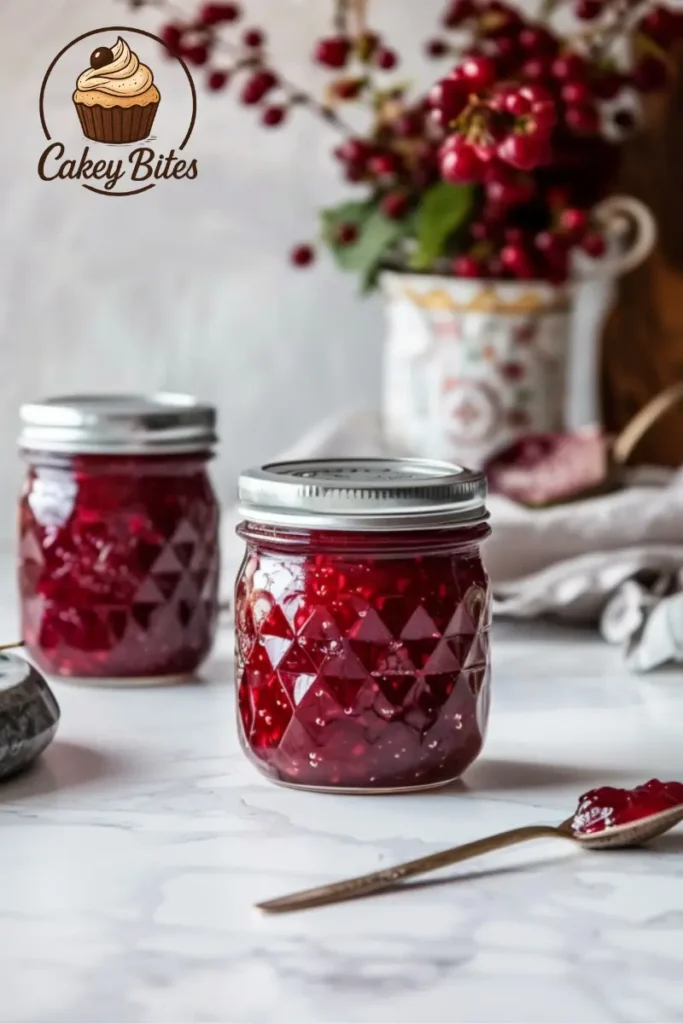
To keep mulberry jam recipe long term, store it right. Freezing or canning both work.
Canning with hot water bath
Pour mulberry jam recipe into sterilized jars. Seal them. Boil in water for 10–15 minutes. This method prevents spoilage.
Freeze your jam
Cool your mulberry jam recipe. Pour into plastic containers with space at the top. Freeze for up to 6 months.
Avoid these mistakes
Don’t reuse old lids. Don’t store in a hot room. Keep mulberry jam recipe in a cool, dark space.
Table: Creative Uses of mulberry jam recipe
| Use Case | Example | Benefit |
|---|---|---|
| Breakfast | On toast, yogurt, smoothies | Easy flavor boost |
| Desserts | Cakes, tarts, bars, glazes | Adds texture and fruit taste |
| Savory Dishes | Glazes, salads, cheese boards | Balances sweet and salty |
| Gifts | Decorated jars, gift boxes | Homemade and meaningful |
| Preservation | Freezing, water bath canning | Keeps fresh flavor for months |
Troubleshooting, Tips & Real-Life Jam Making
Mulberry jam recipe disasters happen to everyone—even seasoned cooks. Maybe your jam turned out too runny, or it’s a little too stiff. Sometimes, it’s even moldy. That doesn’t mean failure. With a few smart fixes, you can still turn your jam into something delicious and safe. This guide will help you save your batch, enjoy the process with your family, and keep the mulberry jam recipe alive all year.
Why your mulberry jam didn’t set and how to fix it
Sometimes, despite doing everything right, your jam just doesn’t firm up. It’s frustrating, but common. The mulberry jam recipe relies on three things: sugar, acid, and pectin. If any of these are off, your jam might stay liquid.
Here’s a simple chart to help you fix common mistakes:
| Problem | Cause | Fix |
|---|---|---|
| Jam too runny | Not enough pectin or sugar | Add more pectin or cook longer |
| Too thick or crystalized | Overcooked | Add water, reheat gently |
| Acid too low | Too little lemon juice | Add lemon juice or citric acid |
| Floating foam or scum | Air bubbles or impurities | Skim off foam while cooking |
If your mulberry jam recipe is too runny, don’t panic. You can re-cook it. Just pour it back into a pot, add a little extra pectin or lemon juice, and simmer until it reaches the right texture. The plate test helps here: drop a spoonful on a cold plate, wait a minute, then push it. If it wrinkles, it’s ready.
Overcooked jam? It might be stiff or overly sweet. Add a splash of water, reheat slowly, and stir until smooth again.
When acid is too low, the pectin won’t work. That’s why many recipes call for lemon juice—not just for taste but also structure. Make sure your mulberry jam recipe includes that key acid.
Foam on top? It’s not dangerous but doesn’t look pretty. Just skim it off with a spoon while cooking. You’ll get a cleaner finish in the jar.
Is moldy jam salvageable? Food safety basics
Jam lasts long, but it’s not immune to spoilage. You might open a jar and see a fuzzy layer or notice a strange smell. It’s disappointing—but you need to be careful.
If you spot mold, throw the jar away. Even if it’s just on the surface, invisible mold threads can go deep. There’s no safe way to scrape it off and keep the rest. The safest move is to toss it and clean your jars well.
To avoid this in the future, always sterilize your jars. Wash them with hot, soapy water, then:
- Boil jars and lids in water for 10 minutes,
- Or use a dishwasher with a sterilize cycle.
Let them dry on a clean towel before filling. That way, your mulberry jam recipe stays safe and shelf-stable.
You can find official and science-based safety advice directly from the USDA National Center for Home Food Preservation, which offers tested methods and guidelines for jams, jellies, and more.
Mulberry jam for kids: make it fun and safe
Cooking with kids turns any recipe into a memory. The bright purple of a mulberry jam recipe is fun for little ones, and the steps are easy to follow with some adult help.
Give kids age-appropriate jobs like:
- Washing mulberries,
- Mashing them with a fork or potato masher,
- Sticking their own labels on jars.
Always keep hot pots out of reach. Jam splatters can burn. Use wide, heavy-bottomed pans and explain each step. You might be surprised how quickly they learn.
For a healthier take, try a low-sugar version of the recipe. Some pectins work even with less sugar. You can also sweeten the jam with ripe apples, banana, or unsweetened juice. That makes your mulberry jam recipe safer for kids, without losing taste.
Once the cooking’s done, the mess begins! Cover your counter with parchment or newspaper. Give kids little cloths and let them help clean. It turns into a fun part of the process.
Seasonal mulberry jam calendar
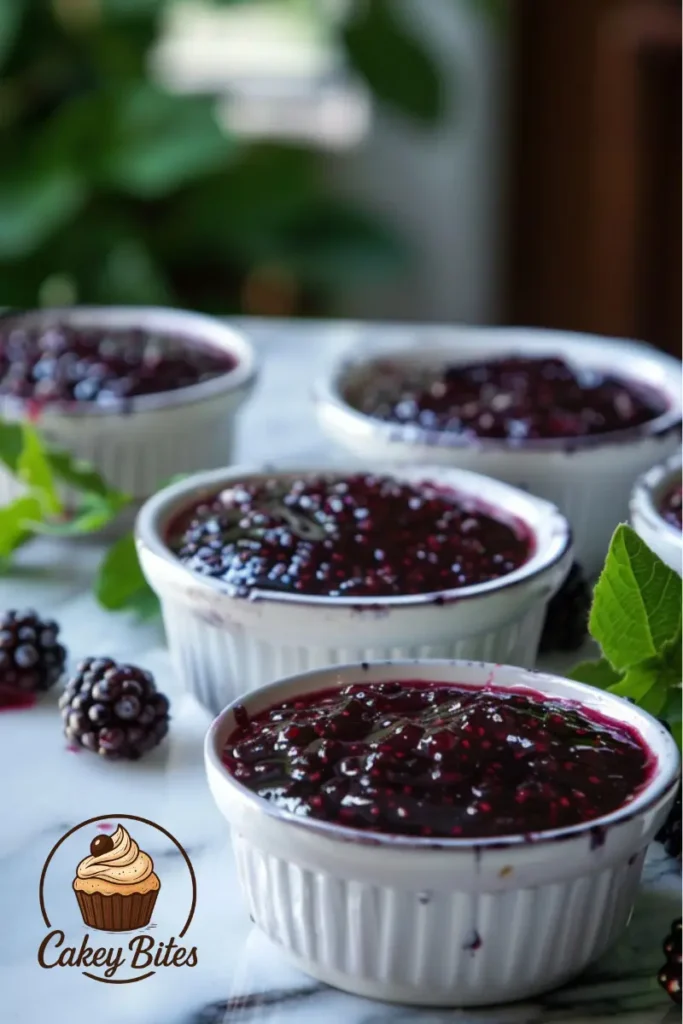
The best time to make your mulberry jam recipe is when mulberries are fresh and sweet. Depending on your region, this happens between May and early July. You’ll know the berries are ready when they fall easily from the tree and stain your fingers purple.
Missed the season? You’re not out of luck. Freeze your berries for later. Here’s how:
- Wash and dry them gently.
- Spread them on a baking tray.
- Freeze until solid.
- Store in freezer-safe bags.
When it’s time to cook, thaw them slowly in the fridge or use them straight in your pot. Frozen mulberries still make excellent jam.
Jam making can become a summer tradition. You can pick berries with your kids, prepare the jam together, and gift jars to neighbors. Some families even turn it into a yearly ritual—everyone brings their own fruit, and they spend an afternoon cooking and laughing.
This rich fruit preserve is also perfect for baking. One popular idea is to use your mulberry jam recipe inside a bento cake. These mini cakes are trendy, adorable, and perfect for layering with fruit jam and frosting. Kids and adults love them equally, and the jam adds a burst of color and taste.
FAQ – Mulberry Jam Recipe
Do you need pectin to make mulberry jam?
No, mulberries contain natural pectin, especially when combined with lemon juice.
Can you leave stems on mulberries for jam?
It’s better to remove stems for smoother texture and cleaner flavor.
Do mulberries have a lot of pectin?
They are moderately high; lemon juice helps boost the natural setting process.
How long to boil mulberries for jam?
Usually 15–20 minutes, or 45–60 minutes for a thicker, low-sugar jam.
What can I do with too many mulberries?
Freeze them, bake pies, make smoothies, or preserve them in jam.
What thickens jam without pectin?
Slow cooking, lemon peel, apple, or chia seeds can naturally thicken jam.
How long will homemade mulberry jam last?
3–4 weeks in the fridge, up to 6 months in the freezer, or longer when canned properly.
Can I eat mulberries right off the tree?
Yes, just wash them first to remove dirt and insects.
How to get worms out of mulberries?
Soak them briefly in salted water, which makes any tiny worms float to the surface.
Final thoughts: the joy of making mulberry jam
There’s something comforting about filling your home with the scent of fresh jam. The bubbling pot, the wooden spoon, and the jars lined up like tiny trophies—it all feels like home.
Making a mulberry jam recipe is about more than food. It brings generations together. It’s a moment to share, laugh, and slow down.
Whether you post your creation online, hand jars to your neighbors, or save one for winter, jam is joy in a jar.
So keep that pot on the stove. Keep experimenting. And let the next batch of your mulberry jam recipe be even better than the last.

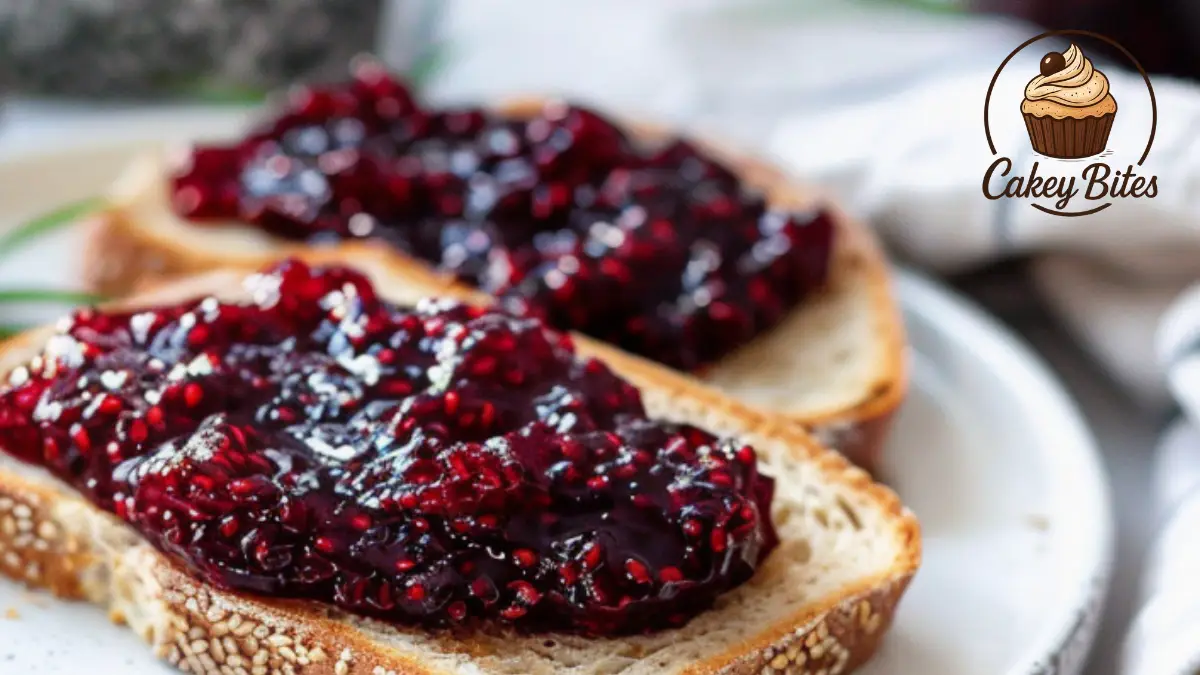
1 thought on “Easy Mulberry Jam Recipe for Homemade Goodness”